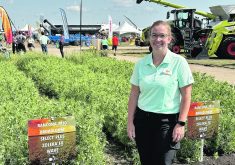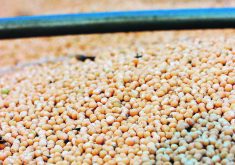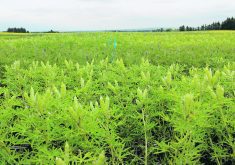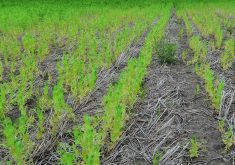A still-developing test to tell producers how bad the aphanomyces spore load is in their fields is gaining polish, thanks to more farmers across Canada sending in samples.
Knowing the spore load of a field could be a powerful planning tool.
The soil-borne disease has a reputation for being both hard to manage and long-lived. An infested field might only be safe for susceptible crops every six to eight years, according to industry materials. But that’s a rough number and, while crop rotation is a main foundation for aphanomyces control, established tests do not give a full set of data for producers to base those plans on. Tests tell only if aphanomyces is present, MPSG notes, not how serious the infestation is or whether levels have dropped enough that peas or lentils are back on the table.
Read Also

Gap in emission regulations hamstrings Canadian hybrid truck manufacturer
A B.C. company building hybrid engines for heavy trucks says they have the opportunity to build something leading edge in Canada, but our own laws are stopping them from doing it.
The new test, developed by an Agriculture Canada team led by plant pathologist Syama Chatterton in Lethbridge, combines soil DNA testing with an already-developed greenhouse test using peas.
Chatterton’s hybrid test works “quite well” in peas, the researcher noted, achieving about 85 per cent accuracy. However, when lentil samples are included, that accuracy drops down to only 70 per cent. They’re working to decipher why.
They’ve also found that the test is more accurate in black soil zones, and less so in brown and dark brown soils. Chatterton said they hope to collect enough samples from different soil types to develop three models, each tailored for one type of soil.
Last year, Chatterton’s team put out a call for soil samples and received about 30, largely from Alberta and the Peace River Region.
Chatterton told the Western Producer last year that they had plans to run the hybrid test on the samples, then follow up with farmers to compare their results with the real-world severity of infection.
This year, researchers put out the call for samples again. So far, they’ve received around 40 from across the Prairies and into Ontario.
Results go into a database. “What we’re hoping to do is give a scientifically validated model for these soil testing labs to work from,” Chatterton said.
The more samples they can gather, the researcher said, the more robust their testing model will be.
If producers wish to participate in the study, they can contact Chatterton at syama.chatterton@agr.gc.ca.
















